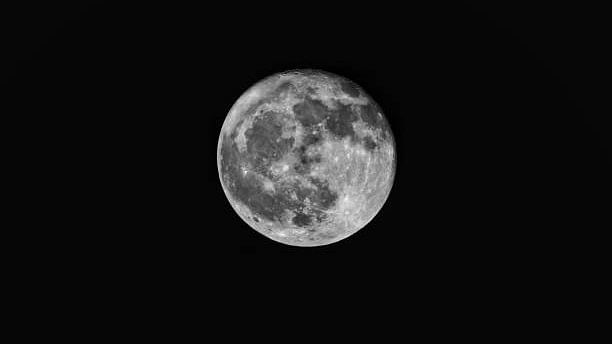
Image showing the moon. (For representation)
Credit: iStock Photo
The Earth's closest celestial companion—shining light on the darkest of nights—faces rare competition, albeit for a brief amount of time. The eternal muse of painters, poets, and failed lovers from time immemorial, the moon may now have to share bragging rights as the Earth's only satellite for almost a month, according to a report by The Times of India.
Later this month, a new 'mini-moon' will revolve around the Earth, providing rare company to our very own satellite. Researchers Carlos de la Fuente Marcos and Raúl de la Fuente Marcos from the Universidad Complutense de Madrid have recently published a study wich reveals that a small asteroid, named 2024 PT5, will temporarily be trapped by the gravitational pull of the Earth from September 29 to November 25 this year.
By virtue of this, the 10 metre-wide asteroid will orbit the Earth for 53 days, before floating back in to space in its usual course. "2024 PT5 will circle the Earth one time before it escapes back into space," the researchers of Universidad Complutense de Madrid were quoted as saying in their research paper.
Known as "temporarily captured flyby," this celestial event occurs when asteroids inadvertantly enter the gravitational field of the Earth, but do not complete more than one revolution around the Earth's orbit, in contrast to other mini-moons that are confined to Earth for extended periods of time.
Other mini-moons that have breached the Earth's orbit in the past have behaved in a similar fashion. An asteroid, for example, drifted out of Earth's orbit in 2006 after remaining there for about a year, while another stayed several years before moving back to space in 2020. These occurances are quite regular as the Earth attracting tiny asteroids from the Near-Earth Objects (NEOs) population is not an uncommon phenomenon.
Asteroids that orbit around the Sun and the Earth in a manner similar to that of 2024 PT5 are termed "horseshoe orbiters". These celestial bodies may be momentarily drawn into the Earth's orbit because they frequently approach our planet at low relative velocities. But the majority of these mini-moons escape back into their heliocentric orbits before completing a full circle around the Earth.